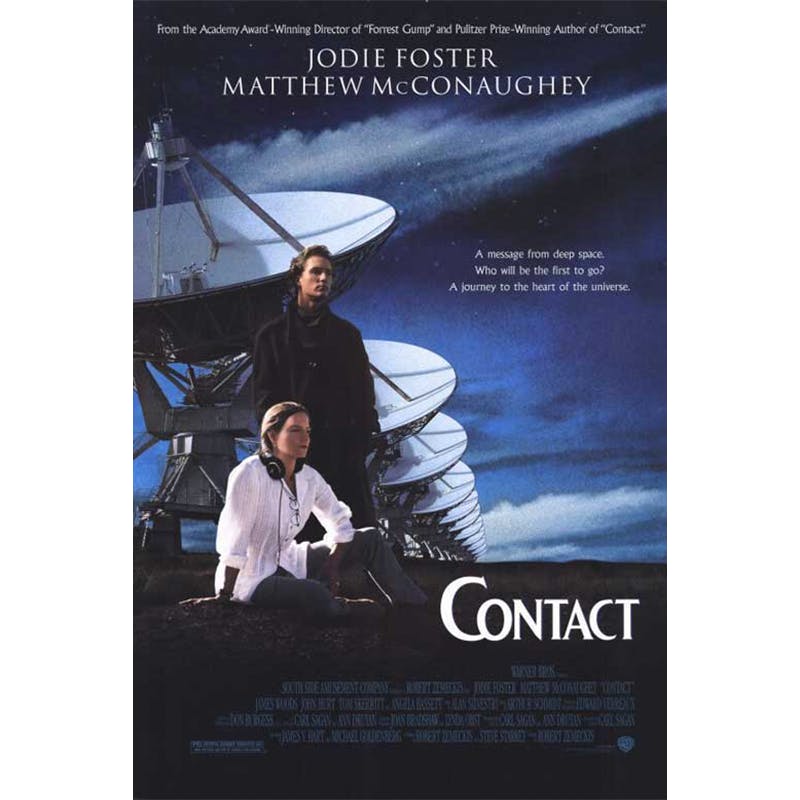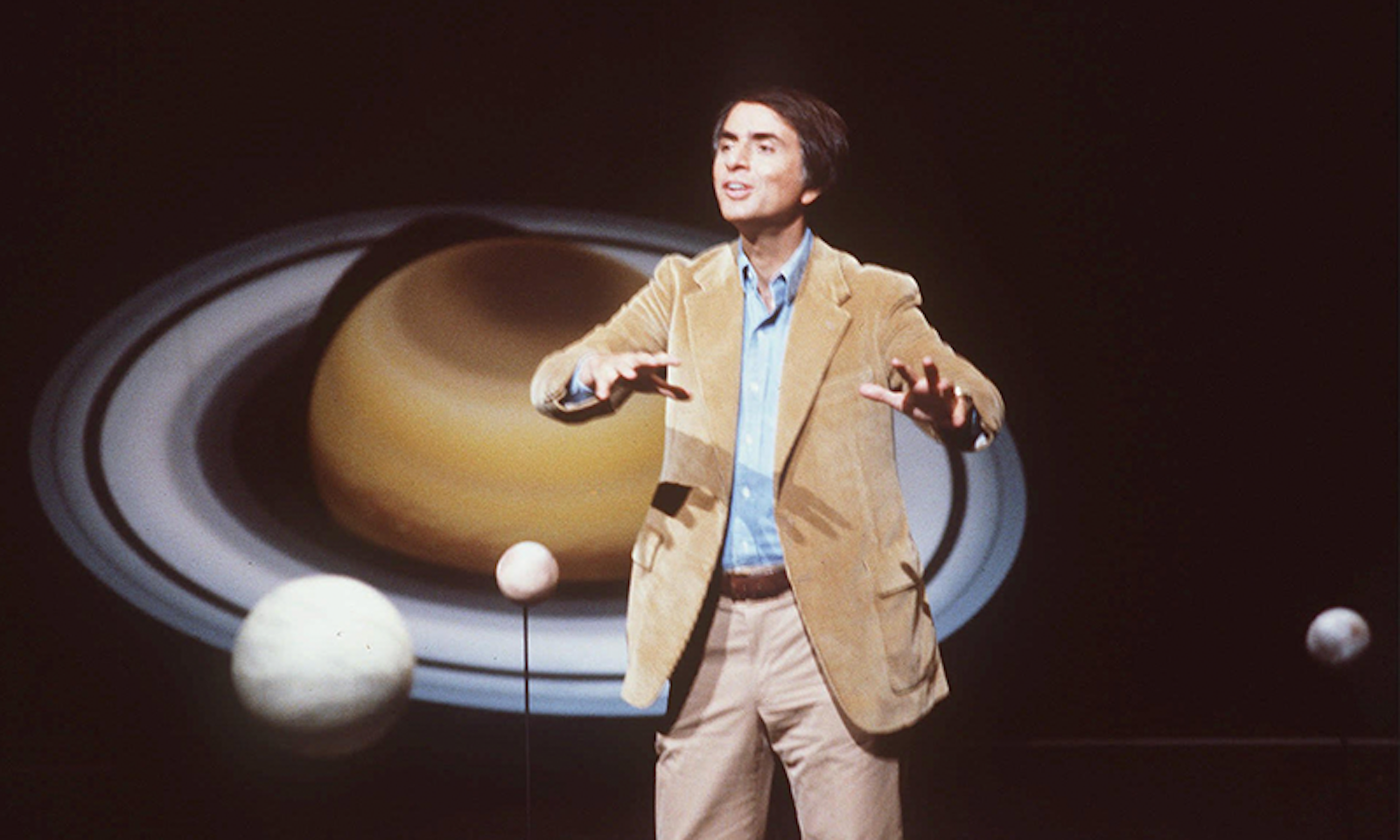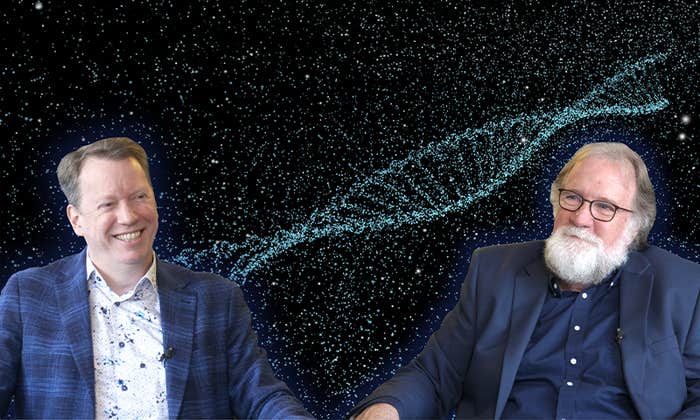Hollywood has been enamored with aliens for as long as movies have been a thing, but perhaps no alien-themed movie has had quite the impact of Contact, released 25 years ago this month. Based on the novel by Carl Sagan, the movie marked a sharp departure from the space-travel-and-alien movies of its time. For starters, the aliens come in peace. (And you don’t even see them until the very end of the film, and even then, they appear in human form.) Contact featured a strong female lead in Dr. Ellie Arroway, played by Jodie Foster, in an era when scientists (let alone women scientists) were rarely seen in a starring role. And while the action spans a large swath of the galaxy, Contact is ultimately a movie about Earthlings and how we perceive science, faith, and our place in the universe. It lacked the popularity of Independence Day and Men in Black, but it arguably touched more lives.
One could say Foster’s co-star in the film was not Matthew McConaughey but rather the Very Large Array, an observatory consisting of 28 enormous dish-shaped radio telescopes in central New Mexico. A row of VLA’s iconic telescopes is featured on the film’s official poster. Yvette Cendes, an astronomer at the Center for Astrophysics, Harvard & Smithsonian, vividly remembers seeing the film as a young teenager, a couple of years after its release. “I think we rented it from Blockbuster—and it was the coolest thing ever,” Cendes says. “And then I read the book, and it was the coolest thing ever.”

Cendes was already keen on astronomy; the film steered her toward radio astronomy in particular. “The movie showed me the kind of astronomer I wanted to be—which is, apparently, Jodie Foster running around the VLA contacting aliens,” she says. That last part is slightly tongue-in-cheek; Cendes has often used data from the VLA not to search for E.T. but to study the interactions between stars and black holes. “I got a lot of teasing from my brother and sister about how I wanted to be Ellie Arroway when I grew up,” she says. “And, well, here we are.”
When Contact was published in 1985, Sagan was at the height of his fame. Among his colleagues, he was known for his work in planetary science and astrobiology, and would author more than 600 scientific papers and articles. But he was unrivaled as a science communicator. He reached his largest audience in 1980, when the television series Cosmos: A Personal Voyage, aired on PBS; he co-wrote the series with writer and producer Ann Druyan, who he would soon marry. The series was viewed by some 500 million people worldwide and remains the most widely watched series in the network’s history.
While Cosmos was rooted in fact, Contact was very much an exercise of the imagination. It tells the story of the discovery of extraterrestrial intelligence, and how that discovery challenges our conception of the world. The movie, and especially the novel, asks us to question what might lie behind the order of the universe. As science-minded as he was, the transition to novel-writing seems to have come naturally to Sagan, who grew up enthralled by the science-fiction stories of his day.
No alien movie has had the impact of Contact, released 25 years ago this month.
In a 1978 essay in The New York Times, Sagan recalled happening upon the magazine Astounding Science Fiction in a candy store in his Brooklyn neighborhood as a pre-teen; he was instantly hooked. He progressed to Jules Verne and H.G. Wells, but soon tired of simplistic stories, or those which ignored the social and political dimensions of the scientific enterprise. But more sophisticated stories held his attention. His favorites included Robert Heinlein’s The Door into Summer; Alfred Bester’s The Demolished Man, Jack Finney’s Time and Again, Frank Herbert’s Dune, and Walter M. Miller’s A Canticle for Leibowitz. “You can ruminate over the ideas in these books,” Sagan wrote.
Sagan later told the Times he tried his hand at fiction “for the same reason I’ve gone on the Tonight show: to reach a different audience, millions of people.” (In the same article Sagan denies having said the phrase “billions and billions”; the utterance is associated with him because Johnny Carson used it when impersonating Sagan on his show.)
The interplay between art and science, between fact and fiction, is something that Sasha Sagan, daughter of Carl and Druyan, grew up with. “My father gave me a Norton Anthology of Poetry when I was a kid; I’d choose a poem and memorize it and then recite it later,” she says. “We had so much fun with that sort of thing.” Sasha, 39, is herself a writer; her latest book, a memoir, For Small Creatures Such As We, was published in 2019. The book takes its title from a line in Contact.
Like her father, Sasha believes that having to choose between art and science is a false dichotomy. “Art and science and literature and music and math—when you’re in school, you have these artificial delineations between them; we have this sense that there are walls between these subjects,” she says. “But they’re all intertwined and interconnected. And the more deeply we understand any one of them, the more deeply we can understand the others.”
Contact was first conceived as a film. Sagan and Druyan wrote up a treatment as early as 1980, after which the project rattled around between studios in what industry insiders refer to as “development hell.” With the film stalled, Sagan decided that a novel would be more straightforward; unlike a movie, a book would give him control of the story from start to finish. With a $2 million advance from Simon and Schuster (said to be the largest advance ever paid for a book not yet written), he got to work.
As the novel neared completion, he sought the advice of physicist Kip Thorne: His central character, Ellie Arroway, needed a way to travel to the star Vega, some 25 light-years distant, in a reasonable amount of time; was a black hole the most plausible way to do this? Thorne, who would later share the 2017 Nobel Prize in Physics for his role in the discovery of gravitational waves, suggested that wormholes made more sense, and Sagan adjusted his story accordingly.
Like her father, Sasha believes that having to choose between art and science is a false dichotomy.
And what of Ellie Arroway herself? The intrepid radio astronomer is often said to be modeled on the real-life astronomer Jill Tarter, former director of the Center for SETI (Search for Extraterrestrial Intelligence) Research. But Sagan has said the character “is based on Annie,” referring to Druyan. And there is another person who anchors Arroway, namely Sagan himself. “I think there’s so much of my dad in her,” says Sasha Sagan. In a recent oral history of the film Contact, published in New York magazine, Druyan says that although Arroway is not based on Tarter, she introduced Foster to Tartar so the actor could be “comfortable with what a woman in science was.”
As compelling as Arroway is, there would be no story without her long-sought aliens. But the aliens in Contact are most noteworthy for what they’re not—namely, drooling, predatory human-eaters. This departure from the tropes of the times is to Sagan’s credit, says William Poundstone, author of Carl Sagan: A Life in the Cosmos.
“We’ve got this whole fairy-tale, tribal idea that anyone who’s out there who’s different, who is not us, is going to be the enemy,” Poundstone says. “Sagan was one of the people who changed that. He said, we don’t have to assume the aliens are automatically going to be enemies. They’re not going to be Marvin the Martian wanting to conquer the Earth.” At the same time, aliens function as the last acceptable mythology in an age of science. “A lot of what science does is say there are no dragons, there are no unicorns—all these things that have been part of our folklore,” Poundstone says. “Scientists tell us they don’t exist. But they can’t tell you there are no aliens.”
Contact sold 1,700,000 copies within two years of its 1985 publication. Its success bolstered the effort to make the film version a reality; even so, studio squabbling delayed pre-production until 1993. Three years later, with Foster and McConaughey cast in the lead roles and Robert Zemeckis in the director’s chair, shooting finally began. By this time, Sagan was battling a cancer of the bone marrow known as myelodysplasia; he would receive three bone marrow transplants from his sister in an effort to slow the disease. Even so, he was frequently on set to watch as his vision took shape. As always, he kept one eye on the science. As Poundstone recalls, “He gave a very famous lecture to the whole crew, at the beginning of the process, so that they would have a sense of what the underlying science was.” (He adds, “I sort of wish they did that with every science-fiction movie.”)
The film producers feared viewers might be put off by a woman who chooses a childless life.
But the movie version of Contact wasn’t simply a celluloid rendering of the novel. The ending, in particular, was utterly different. In both the novel and the film, we see Arroway devoting her career to SETI, yearning to know if we’re alone, or if there is something, somewhere, in the vastness of the cosmos that we might converse with. But in the novel, Arroway finds something more: Hidden within the digits of pi is a kind of code which, when appropriately deciphered, reveals a picture of a circle, implying that someone—God? Aliens of unimaginable power?—designed the very fabric of the universe according to some grand blueprint. This might seem strange coming from an author known for his ardent agnosticism (the word atheism, though accurate, somehow feels too harsh for the affable Sagan). The twist beguiled another of Sagan’s biographers, Keay Davidson; in Carl Sagan: A Life, he writes that “with Contact, the ever-contradictory Carl Sagan—avowed nonbeliever—offered one of the most religious science-fiction tales ever written.”
Nothing of the sort is to be seen in the film version. According to Davidson, a “fear of boring the masses weighed on them [the producers] heavily”; they went “around and around on the issue of whether pi would be too difficult a concept to explain to a mass audience.” Sagan pushed for keeping the original ending, but to no avail. In the end, writes Davidson, “someone high up decided that pi, a concept taught in every high school, is too challenging for mass audiences.”
Pi was not the only problem the filmmakers struggled with. They also fretted over how audiences would react to an ambitious, unmarried, career-focused woman as the central character. Should Arroway perhaps have a child? As Davidson puts it, the producers “seem to have feared that many viewers might be put off by a woman who chooses a childless life.” (He also notes that they spent “a comical amount of time trying to figure out how to hitch up Ellie romantically to someone—anyone—no matter how badly he suited her.” Eventually Palmer Joss, the Christian philosopher played by McConaughey, was shoehorned into the role.
Contact divided critics. Roger Ebert called the movie “the smartest and most absorbing story about extraterrestrial intelligence since Close Encounters of the Third Kind (1977).” Others were not so impressed. The Hollywood Reporter found the film too egg-heady for its taste, its dialogue “so gratingly expositional that one would have to consult a VCR manual to duplicate its utilitarian dullness.” The withering review described the movie’s philosophical musings, in which science and religion square off, as “turgidly pompous,” concluding that the film is ultimately “a disappointingly earthbound production, weighed down by the ballast of talking-heads dramaturgy and bloated storytelling.”
Nonetheless, the film has come to be seen as one of the better science-fiction films of recent decades, and certainly one of the most cerebral, at least by the standards of a major Hollywood blockbuster. As Davidson puts it, “Contact is not a great film, but it is a good and noble one.”
Sagan died in December 1996, six and a half months before the film’s release; a title card reads “For Carl.” Sasha Sagan vividly recalls attending the premiere in Los Angeles as a teenager still grappling with the loss of her father. “There was a real, profound dichotomy between seeing the movie for the first time, and this deep sense of loss and grief,” she says. “Seeing this story, which is in many ways a father-daughter story, on the screen really was a deeply emotional and complicated experience, in a lot of ways.”
Like her father, Sasha is not a traditional believer in any sense. But like Carl, she understands that science and certainty don’t always meet. She views the awe we experience when confronting the most profound questions about the universe, and our place within it—which Arroway manages to glimpse in Contact—as being compatible with science. “Science is not in opposition to that sense of grandeur and beauty—that chill running down the back of your neck that makes you feel like you’re part of something enormous,” Sasha Sagan says. “It’s the source of that.” ![]()
Dan Falk (@danfalk) is a science journalist based in Toronto. His books include The Science of Shakespeare and In Search of Time.
Lead image: Associated Press


























